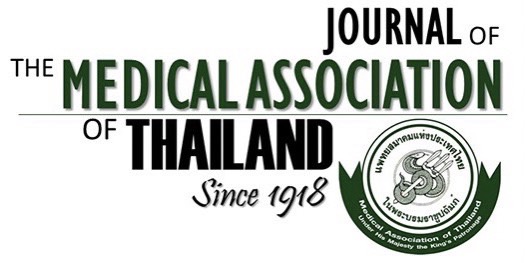Positive Pulmonary Computed Tomography Angiography in Patients with Suspected Acute Pulmonary Embolism: Clinical Prediction Rules, Thromboembolic Risk Factors, and Implications for Appropriate Use
Thanawat Vongchaiudomchoke MD*, Thananya Boonyasirinant MD*
Affiliation : * Division of Cardiology, Department of Medicine, Faculty of Medicine Siriraj Hospital, Mahidol University, Bangkok, Thailand
Background : Acute pulmonary embolism (PE) is associated with a variety of non-specific clinical manifestations. Using
diagnostic algorithms that are based on internationally recognized guidelines, pulmonary computed tomography angiography
(CTA) serves as the gold standard diagnostic imaging tool in PE. However, inappropriate use of pulmonary CTA may lead
to unnecessary radiation exposure, contrast exposure, and cost. Based on our review of the literature, there is no existing
data regarding prevalence and appropriate use of pulmonary CTA in suspected acute PE in Thailand.
Objective : To assess the prevalence of positive pulmonary CTA and evaluate appropriateness of use of pulmonary CTA,
according to clinical prediction rules and recent guidelines.
Material and Method: Three hundred consecutive patients admitted to the general medical ward at a large university-based
tertiary referral center who were sent for pulmonary CTA due to suspected acute PE were included. Prevalence of positive
pulmonary CTA for PE and other abnormalities were analyzed. Baseline clinical characteristics (including thromboembolic
risk factors) and basic investigations (including chest X-ray, ECG, pulse oximetry, and D-dimer) were compared between
patients with and without acute PE.
Results : Acute PE was diagnosed by pulmonary CTA in 110 (36.7%) patients. According to Wells score and revised Geneva
score, patients were categorized into low, moderate, and high probability, as follows: 63, 178, and 59 patients, respectively,
and 44, 246, and 10 patients, respectively. Patients with high probability according to Wells score and revised Geneva score
had higher rate of positive pulmonary CTA results, as compared to low and moderate probability (59.3%, 7.9%, and 39.3%,
respectively, and 60%, 19.5%, and 38.2%, respectively). Predictors of positive CTA were sign of deep vein thrombosis (DVT)
(OR: 2.6, 95% CI: 1.497-4.514; p<0.001), S1Q3T3 (OR: 4.211, 95% CI: 2.242-7.908; p<0.001), and enlarged right
pulmonary artery (OR: 2.439, 95% CI: 1.475-4.035; p<0.001). Using multivariate analysis, all three parameters remained
independent factors. In the Wells score low probability group, 31 of 63 patients were not tested for D-dimer prior to pulmonary
CTA, with only one patient in that group being diagnosed with acute PE.
Conclusion : This was the first study to investigate prevalence of positive pulmonary CTA for acute PE in a large
university-based tertiary referral hospital in Thailand. Prevalence of positive test for PE by pulmonary CTA in patients with
suspected acute PE was approximately 33%. Sign of DVT, S1Q3T3 pattern, and enlarged right pulmonary artery were
significant clinical predictors of positive pulmonary CTA. Positive pulmonary CTA result was much less likely in patients
with low probability, especially in the absence of thromboembolic risk factors and positive D-dimer. This study emphasized
the importance and value of accurate and effective triage in reducing both patient care costs and patient radiation exposure.
Keywords : Pulmonary embolism, Pulmonary computed tomography angiography, Thromboembolic risk factors, Appropriate use



